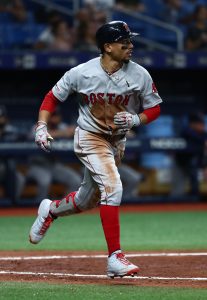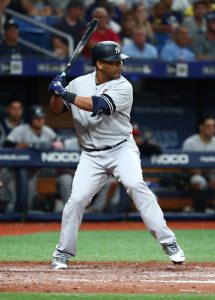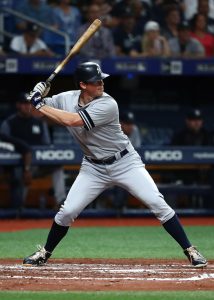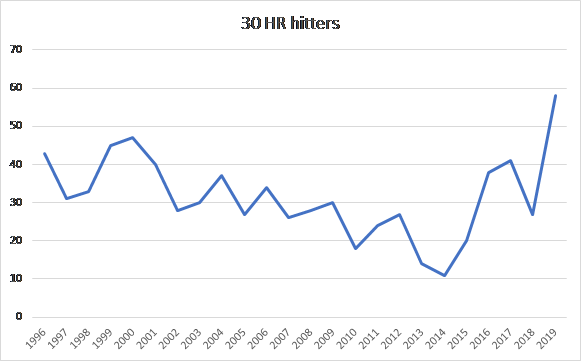With little in the way of hot stove news during the rising action of the MLB postseason, let’s take a look ahead to this winter’s free agency. In particular, we’ll be evaluating the market for a player who could prove to be one of the offseason’s more intriguing cases: Cardinals outfielder Marcell Ozuna.
After he was traded from the Marlins to St. Louis as part of the post-2017 fire sale in Miami, Ozuna has endured a pair of unspectacular seasons as a Cardinal. That’s not to say he’s been bad, but expectations were high after he slugged 37 home runs in his last season with the Marlins. His struggles in 2018, when he totaled only 23 round-trippers, can be at least partly be attributed to a nagging shoulder injury that plagued him throughout the year and ultimately required surgery. This year, with a healthy shoulder, he has enjoyed a nice uptick in his power numbers, though that has still only translated to a slightly above-average .804 OPS.
When the Cardinals postseason comes to a close, Ozuna will have a chance to hit the open market for the first time, reaching free agency as a 28-year-old outfielder. (He’ll play the 2020 campaign at age 29). That places him among the younger options from which teams will choose, making him arguably the most attractive of this offseason’s outfield class, which is a relatively thin one.
Ozuna, for his part, has expressed a desire to remain in St. Louis beyond this year, calling it a “priority” to ink a contract that will keep him with the Cardinals. However, the Cardinals may not share his enthusiasm for a reunion. John Mozeliak expressed hesitance to discuss an extension with Ozuna, instead opting to postpone that matter until the offseason. Other, cheaper options within the organization could replace Ozuna in the corner outfield, with Tyler O’Neill and Dylan Carlson seemingly ready to contribute.
It seems like a good bet that the Cardinals will tender a qualifying offer to Ozuna, which figures to come in at around $18MM this offseason. That designation would force a signing team to forfeit a draft pick in order to acquire Ozuna’s services.
Many teams might not be convinced that Ozuna is capable of returning to the power numbers that he displayed on his way out of Miami. Still, there are promising signs: Ozuna ranks among baseball’s best in terms of exit velocity and hard-hit rate, both of which are at career-best marks. His expected statistics—which calculate the expected outcomes of batted balls based on exit velocity and launch angle—paint him as one of the premier offensive performers in baseball.
Another point of concern will be Ozuna’s defensive shortcomings. Although there’s a Gold Glove Award on his mantle, Ozuna has provided little value as an outfielder since departing Miami. He grades as below-average in Statcast’s outs above average and outfielder jump metrics—ranking in the 13th and 29th percentile, respectively. On the positive side, he is credited with 2 DRS, thanks in large part to a strong throwing arm. That’s not a bad mark at all, but teams may be hesitant to project that performance into his thirties as he seeks a multi-year deal.
Could Ozuna be a candidate to accept the qualifying offer? Sure, there’s a solid chance that he could eclipse the total value with a multi-year contract on the open market (though almost certainly at a lower AAV), but accepting the one-year deal could grant Ozuna’s wish to stay in St. Louis and attempt to rebuild his value, perhaps with an eye on a contract extension with the Cardinals or another chance at free agency following the 2020 season.
As we all well know, the free-agent landscape has been notoriously cruel over the last two years, and Ozuna feels like a player who could be strongly affected by the evolving market. As a bat-first left fielder nearing his thirties, teams might be reluctant to invest heavily in a profile that depends mostly on offensive production—which, generally speaking, has been underwhelming since Ozuna joined the Cardinals. If Ozuna and his reps get an inkling that his free-agent market may not be as expansive as they hoped, that could give another reason to regroup and return to the Cardinals under the qualifying offer.
However, the allure of a multi-year contract with a total guarantee exceeding that of the QO may be too much to resist for Ozuna, a first-time free agent in his prime years. Even if his most likely outcome is a two- or three-year deal with an AAV of about $13-16MM, Ozuna may not have another chance to test the open market as arguably the best player at his position. That alone might incline a team to overpay for him. Regardless, as we head towards another offseason of intrigue, Ozuna may be a name to follow in a free-agent class that lacks star-power position players.

 Betts earned $10.5MM in 2018
Betts earned $10.5MM in 2018 


